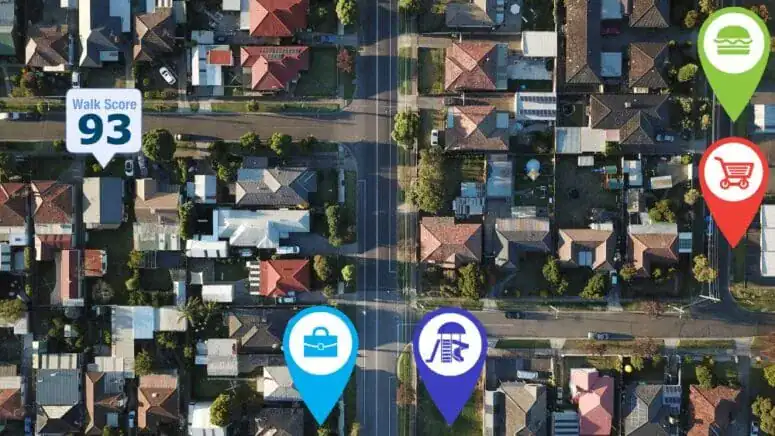In the modern real estate market, convenience and lifestyle are paramount considerations for homebuyers. With more people prioritizing accessibility, sustainability, and an active lifestyle, the concept of “walkability” has gained significant importance. Walkability scores, which assess how easily residents can access amenities and services on foot, are valuable indicators of a property’s convenience and overall quality of life. Integrating walkability scores into Multiple Listing Service (MLS) search filters can empower homebuyers to make more informed decisions based on their preferences and needs.
In this article, we will explore the importance of walkability scores, how they can be effectively integrated into MLS platforms, the benefits of this integration for both buyers and agents, challenges to consider, and best practices to ensure a seamless implementation.
Understanding Walkability Scores
A walkability score is a numerical rating, typically ranging from 0 to 100, that measures how easily residents can walk to essential services and amenities, such as grocery stores, schools, parks, healthcare facilities, and public transport. The higher the score, the more pedestrian-friendly the area is.

These scores are often determined by assessing factors such as:
- Proximity to Amenities: The closeness of various essential services like grocery stores, restaurants, and public transportation.
- Pedestrian Infrastructure: The quality of sidewalks, crosswalks, and walking paths.
- Safety: The safety of walking routes, including well-lit streets and secure neighborhoods.
- Traffic Density: How busy the roads are and the overall traffic conditions that could impact pedestrian movement.
- Topography: The area’s walkability can also be influenced by its geography, with flat areas being more pedestrian-friendly than steep, hilly regions.
For example, a walkability score of 100 would indicate that a property is within walking distance of all essential services, while a score of 0 would indicate that the property is located in a car-dependent area with few walkable amenities.
Why Integrate Walkability Scores into MLS Search Filters?
Increased Convenience for Buyers:
Today’s buyers are more conscious of the lifestyle that a home and its surrounding neighborhood offer. People, especially those in urban areas, are increasingly opting to reduce their reliance on cars and embrace a more walkable, sustainable lifestyle. By integrating walkability scores into MLS search filters, potential buyers can easily find properties that meet their needs without the need for extra research.
Appealing to Eco-Conscious Buyers:
As environmental awareness grows, more people are looking to minimize their carbon footprint. Walkable neighborhoods are often associated with reduced car use, making properties with high walkability scores more attractive to eco-conscious buyers.
Enhanced User Experience:
Walkability scores provide an additional, useful layer of information that complements the standard property details like price, size, and number of bedrooms. Buyers can filter their search results based on walkability scores, making the search process more tailored and efficient.
Attracting a Broader Market:
Walkability is an appealing factor for a wide range of buyers. Urban professionals, young families, retirees, and anyone who prefers convenience will find walkable properties more appealing. Integrating this information into MLS search filters ensures that listings meet the demands of various market segments.
How to Integrate Walkability Scores into MLS Search Filters
Integrating Walkability Data Sources:
To include walkability scores in MLS platforms, it is essential to use reliable data sources. Several third-party providers, such as Walk Score (a service of Redfin), offer accurate and up-to-date walkability scores. Integrating their data into the MLS platform will allow buyers to view these scores alongside other property details.
Adding Walkability Scores to Listing Information:
Walkability scores should be visible directly on property listings. For each property, include a walkability score, an icon or visual representation (e.g., a simple bar or star system), and a brief description of what the score means. This can help users better understand how walkable the property is and how close it is to essential services.
Search Filter Options:
MLS platforms can create a dedicated search filter specifically for walkability. This would allow buyers to filter their property search based on a minimum walkability score, making it easier for them to focus on homes located in highly walkable neighborhoods. For example, a user can select a filter for properties with a walkability score of 70 or higher.
Highlight Walkability Features on Property Pages:
In addition to including a walkability score, it’s useful to show detailed walkability features such as the distance to nearby amenities (e.g., “5-minute walk to grocery store,” “10-minute walk to subway station”). Providing this level of detail helps buyers understand how the score was determined and the convenience of living in that neighborhood.
Map Integration:
Integrating interactive maps that display the walkability score and show nearby amenities can further enhance the user experience. These maps can help buyers visualize how the property is connected to the neighborhood and what services are within walking distance.
Benefits of Integrating Walkability Scores
Improved Decision-Making for Buyers:
By incorporating walkability scores into the MLS search filters, buyers can focus their search on properties that meet their specific lifestyle preferences. For example, someone who works in the city might prioritize properties with higher walkability scores to reduce commuting time, while a retiree might seek homes in quieter, more walkable areas.
Better Marketing for Agents:
Real estate agents can market homes more effectively by highlighting the walkability score in their listings. Homes in walkable neighborhoods often sell quicker, as buyers are drawn to the convenience and lifestyle benefits of these areas.
Competitive Edge for MLS Providers:
Offering walkability scores as part of the search filter options can differentiate MLS platforms from competitors. In an increasingly tech-driven real estate market, incorporating data that enhances the search experience can increase platform engagement and usage.
Supporting Sustainable Development:
Areas with high walkability scores often align with urban planning and sustainable development goals. By promoting properties in walkable areas, MLS platforms can help support the broader goals of reducing dependence on cars and promoting environmentally friendly living.
Challenges and Considerations
Data Accuracy and Consistency:
The accuracy of walkability scores depends on the data sources used. It is essential to ensure that the data provided is accurate and up to date. MLS platforms must partner with reliable and reputable data providers to guarantee consistency and precision in the walkability scores.
Geographical Variations:
Walkability may vary significantly depending on the location. For example, urban areas tend to have higher walkability scores than rural areas. It’s essential to contextualize the walkability score so that users understand the limitations and variations depending on geographic location.
Complexity of Implementation:
Integrating walkability scores into an MLS platform may require additional technical resources and integration with third-party providers. This can involve costs, as well as the need for ongoing maintenance and updates to ensure that the data remains current.
User Education:
Not all buyers are familiar with the concept of walkability scores. It’s important to educate users about what the score means and how to interpret it. Providing context through tooltips, descriptions, or educational resources on the MLS platform can help ensure that buyers use the walkability score effectively.
Best Practices for Integration
Use a Clear Rating System:
Implement a simple and intuitive walkability score system. A 100-point scale, or a 5-star rating system, can make it easy for buyers to understand the level of walkability in an area. Avoid overcomplicating the score with too much detail.
Provide Contextual Information:
Buyers should be able to understand how the score was determined. Include a brief explanation on each property’s listing page about what factors contribute to the walkability score.
Highlight Nearby Amenities:
Include a detailed list or a map showing the most important amenities within walking distance, such as grocery stores, schools, parks, and transit stations. This additional context will help buyers understand why a certain property has a high or low walkability score.
Optimize for Mobile:
Ensure that walkability scores and related information are displayed effectively on mobile devices. Many buyers will access MLS platforms on the go, so making the walkability score and amenities easily accessible from mobile devices is crucial.
Regularly Update Data:
Keep the walkability data fresh by regularly updating it. Changes in infrastructure, new development projects, or even road closures can affect the walkability of a neighborhood, so it’s important to refresh the data frequently.
Conclusion
Embedding walkability scores into MLS search filters offers a valuable enhancement to the home-buying experience. It allows buyers to quickly assess how well a property fits their lifestyle preferences, especially in terms of convenience and accessibility. By highlighting walkability scores alongside traditional property details, MLS platforms can provide a more holistic view of a property’s value and appeal.
While integrating walkability scores may pose some challenges, such as ensuring data accuracy and educating users, the long-term benefits for both buyers and agents are significant. By offering this feature, MLS platforms can improve user experience, differentiate themselves in a competitive market, and contribute to more sustainable, walkable communities.













